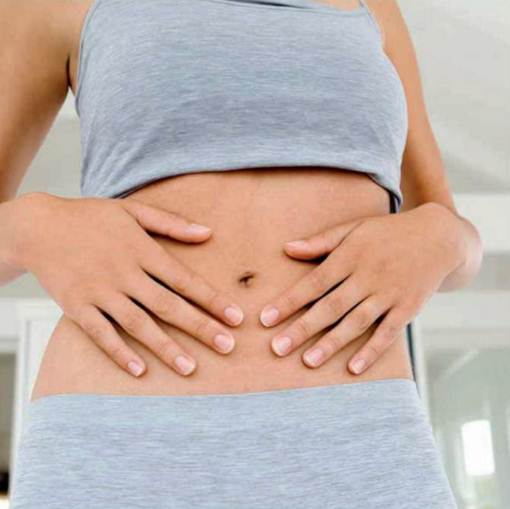Fibroids often cause painful, heavy
periods, they may lead to anaemia, and can even affect your ability to have a
healthy baby. You might be surprised to learn they’re more common than you
think. Around four in 10 women over the age of 40 have fibroids, but many won’t
know.

Fibroids
often cause painful
What are fibroids?
Fibroids, or myomas, are benign tumors that
can form in and around the uterus. There are three main types: the most common
is an intramural fibroid, which grows in the wall of the uterus; a submucosal
fibroid grows in the lining of the uterus, or endometrium; while a subserosal
fibroid grows on the outside of the wall of the uterus.
Although it is not known exactly why
fibroids occur, the sex hormones oestrogen and progesterone are believed to
play a key role in their development, so they only grow in women of
reproductive age.
“The majority of women with fibroids have
small ones, and never know about it,” says Dr Elizabeth Farrell, a
gynaecologist and founder of the Jean Hailes Foundation. “They are often
discovered if a woman has an ultrasound exam for something else.”

If
you are pregnant, having fibroids means there’s a higher risk of miscarriage
But for those women who have symptoms, it
can mean heavy, long and painful periods, spotting between periods, painful
sex, a feeling of pressure in the back, bowel and bladder, frequent urination
and swelling in the lower abdomen. In rare cases, fibroids can obstruct the
bladder completely.
Farrell says that fibroids symptoms should
be investigated in case of other conditions and possible complications,
including anaemia from excessive menstrual blood loss. Also, if you are
pregnant, having fibroids means there’s a higher risk of miscarriage or
premature delivery due to a reduced blood flow to the placenta, and reduced
space for the developing baby.
“Fertility can also be compromised as
fibroids can interfere with the implantation of the fertilized egg,” says
Farrell. “This depends on how big the fibroids are, their shape, and where they
are situated.”
What are my treatment options?
Fibroids are diagnosed using an ultrasound
examination of the uterus, and there are several treatment options.
If the fibroids are small and without
symptoms, they can be monitored over time. Drug therapy using hormones can be
used to shrink larger fibroids before surgical removal.
When it comes to surgery, the least
invasive option is hysteroscopy, where the fibroids are removed through the
cervix using a hysteroscope.
Uterine arterial embolisation can be used
to treat large fibroids. Under a local anaesthetic, a fine tube is passed
through an artery supplying the fibroids with blood, and sand-like particles
are injected into the artery to block the blood supply. The fibroid slowly
dies, and symptoms ease over time. This approach is best for women who have
completed their families, as risks include premature infertility and adverse
pregnancy outcomes, says Dr Melisa Buttini, a consultant gynaecologist from The
Wesley Hospital in Brisbane.
Women who are concerned about protecting
their fertility can choose abdominal surgery for large fibroids. This could
either be done by “keyhole” surgery, where a thin tube is inserted through the
abdomen, or by abdominal surgery, where the fibroids are accessed through a
large incision.
A hysterectomy is the “final solution” for
fibroids, and only suits women who have finished having babies, says Buttini.
New procedures
The MyoSure tissue removal
system has
recently been introduced in Australia. It removes submucosal fibroids
via the
cervix without having to cut the uterus or damage the lining. This is
especially important if you want to have children. Associate Professor
Jason
Abbott, a gynaecologist and laparoscopic surgeon at Sydney’s Royal
Hospital for Women, says: “The MyoSure is a mechanized intra-uterine
machine that cuts
the fibroid and removes it from the cavity. It is suitable for those
fibroids
that are completely contained within the cavity, or where there is
minimal
inclusion of it into the wall of the uterus.”
A relatively new non-surgical treatment
uses ultrasound-guided focused magnetic resonance imaging to destroy the
fibroids. “But this is offered in only a few places in Australia, and has not been fully evaluated yet,” says Abbott.
Besides being expensive, the procedure is
also not without risks, such as burns to the skin, bowel and bones from “stray”
heat.